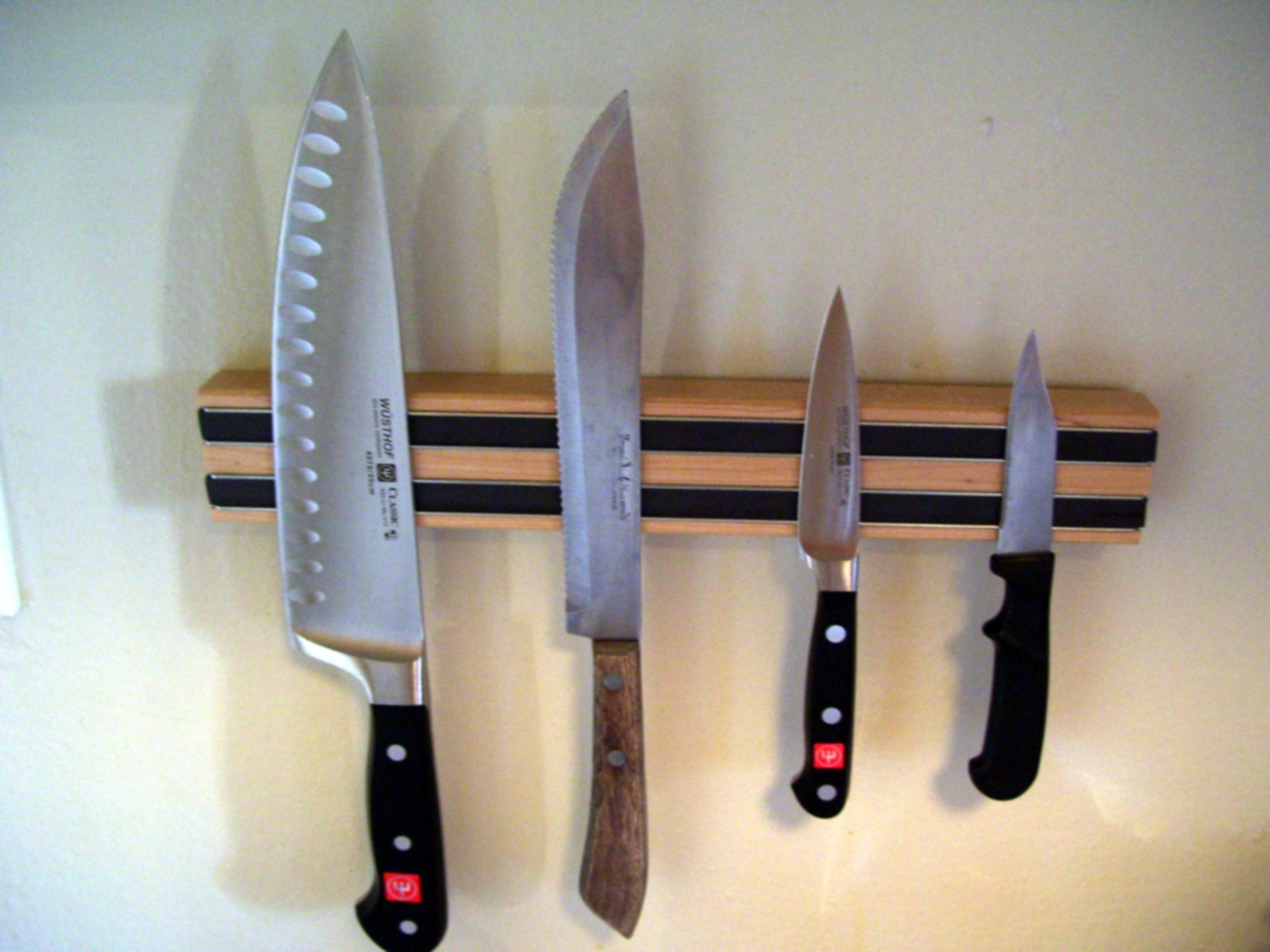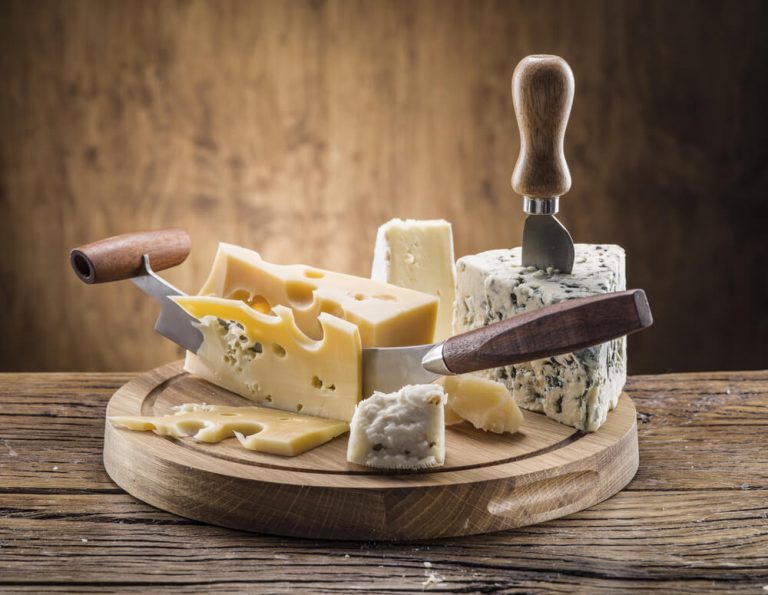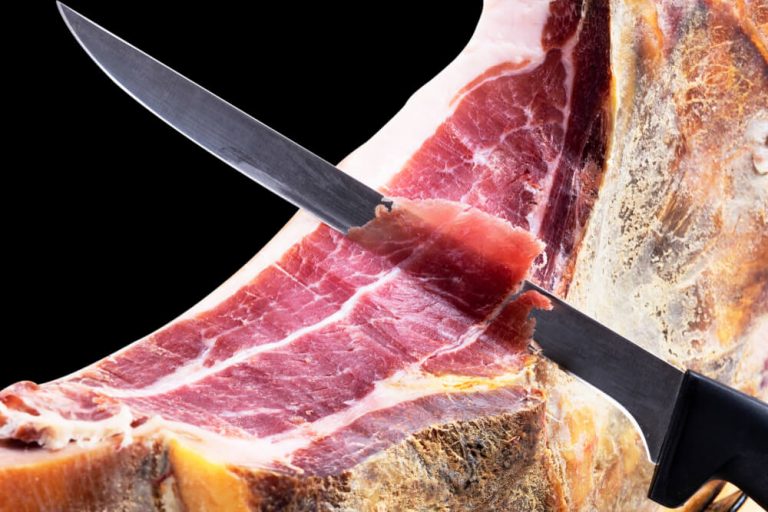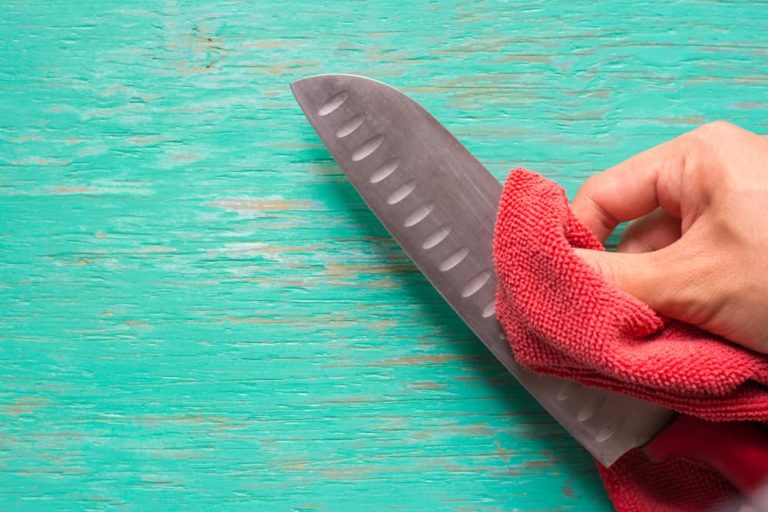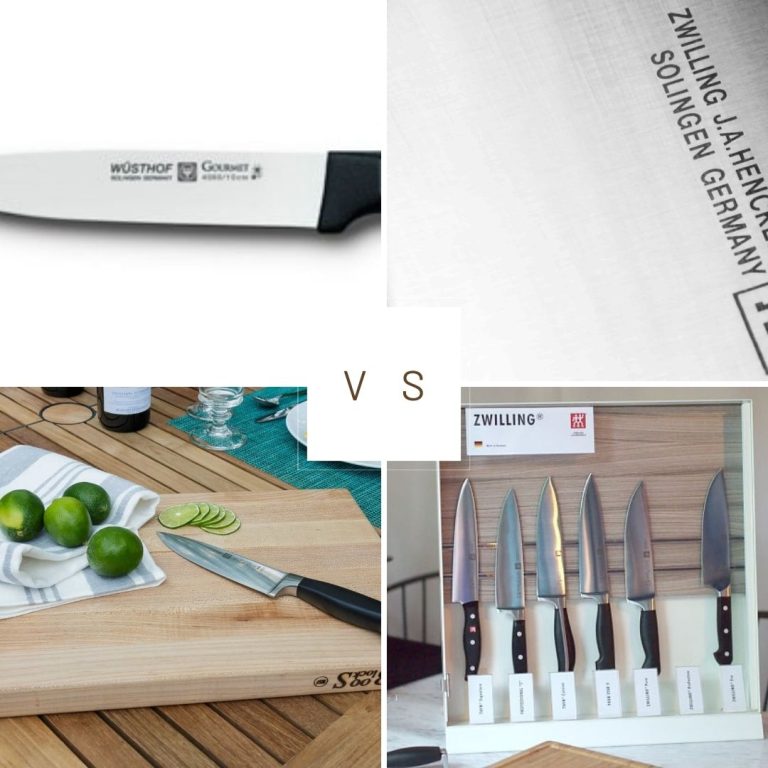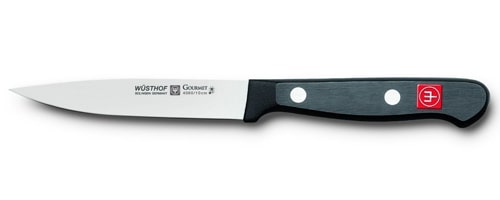Before investing your money on a Wusthof knives are you research about how long do wusthof knives last? In the realm of professional culinary arts, the tools of the trade are as crucial as the chef’s skill and experience. Among these essential tools, knives hold a paramount place, serving not just as instruments of creation but as extensions of the chef’s hands. Within this cadre of essential culinary tools, Wusthof knives stand out as epitomes of quality, durability, and precision, earning a revered status in kitchens around the globe.
The legacy of Wusthof knives stretches back over two hundred years, rooted in the famed cutlery center of Solingen, Germany. Known for their impeccable craftsmanship, these knives have become a staple in both professional and amateur kitchens, celebrated for their balance, sharpness, and resilience. This esteemed reputation is not without reason; a Wusthof knife is often seen not just as a utensil but as a lifetime culinary companion, embodying the fusion of traditional forging techniques with cutting-edge technology.
In today’s culinary world, where sustainability and quality are increasingly prioritized, investing in high-end kitchen tools like Wusthof knives is not only a nod to tradition and performance but also a commitment to long-term value and environmental stewardship. Choosing tools that are built to last reduces waste and the need for frequent replacements, aligning with a more sustainable approach to culinary arts.
For professional chefs and culinary educators, the maintenance of these fine instruments is as critical as their selection. Proper care ensures that these knives retain their exemplary performance and longevity, traits that have cemented their status in the pantheon of professional kitchen tools. Recognizing the importance of this, our guide aims to offer comprehensive insights into the durability of Wusthof knives, alongside practical tips for their maintenance, and comparisons with other leading brands. By delving into these areas, we seek to equip culinary professionals with the knowledge to maximize the lifespan of their most trusted tools, ensuring that they continue to inspire and create culinary masterpieces for years to come.
Table of Contents
Unveiling the Craftsmanship of Wusthof Knives

At the heart of every exquisite dish that leaves a professional kitchen is a set of tools wielded with precision and care by the chef. Among these, knives hold a distinguished status, and when it comes to knives that blend tradition, craftsmanship, and cutting-edge technology, Wusthof knives are unparalleled. The legacy of Wusthof knives, deeply rooted in the historic cutlery capital of Solingen, Germany, spans over two centuries, a testament to enduring quality and unwavering commitment to excellence.
The Heritage of Wusthof Knives
Founded in 1814, Wusthof has honed its craft over seven generations, establishing itself as a beloved fixture in the culinary world. This storied brand has garnered esteem not only from home cooks but more significantly among professional chefs who demand reliability and precision from their tools. The name Wusthof itself has become synonymous with quality, a beacon of tradition in an industry that values both heritage and innovation. Its standing among culinary professionals is not just a matter of reputation but a reflection of the indispensable role these knives play in professional kitchens around the globe.
Why Chefs Choose Wusthof: Material and Manufacturing Process
The exceptional quality of Wusthof knives can be attributed to meticulous craftsmanship and the use of premium materials. Central to their construction is the use of high-carbon stainless steel, a material chosen for its remarkable strength, durability, and ability to retain a sharp edge. This steel forms the core of each knife, ensuring that each piece is capable of withstanding the rigors of daily professional use while offering unparalleled precision in cutting.
Equally significant to the Wusthof knife’s distinction is its forging process. Unlike stamped knives, forged Wusthof knives are crafted from a single piece of steel, heated to an exacting temperature, and then shaped, honed, and tempered. This traditional forging technique contributes not only to the knife’s balanced feel in the hand but also to its overall longevity. The process of forging enhances the density of the steel, making it more resistant to bending and breaking, and allows for a sharper blade that can be maintained with regular honing.
Furthermore, Wusthof’s Precision Edge Technology (PEtec) adds another layer of superiority to their knives. This innovative sharpening process uses computer-controlled machinery to ensure that each blade is sharpened with precision, resulting in edges that are 20% sharper and have twice the edge retention compared to manual sharpening methods. It’s clear that the company’s commitment to utilizing advanced technology without forsaking traditional craftsmanship contributes significantly to the knives’ lasting durability.
In sum, the convergence of high-grade materials, traditional forging processes, and modern technological advancements underlie the reasons why chefs globally choose and trust Wusthof knives. These elements not only promise longevity but also guarantee a level of performance and reliability that professional chefs, who consider their knives as extensions of their hands, rightfully demand.
The Expected Lifespan of Wusthof Knives
In the culinary world, where precision and reliability intersect at the point of a knife, the choice of this tool can significantly impact a chef’s work. Wusthof, a revered name among culinary professionals, has long stood as a testament to quality and durability. However, the true measure of a knife’s value is its lifespan, especially when subjected to the rigors of professional use.
Professional Usage vs. Longevity
The daily grind of a professional kitchen tests the mettle of any knife. Here, Wusthof knives demonstrate their inherent value, crafted not only to perform but to last. The high-carbon stainless steel and meticulous forging process imbue these knives with a resilience that withstands the demands of professional use. Yet, longevity is not solely a product of craftsmanship but also of care. Regular honing, proper cleaning, and storage are pivotal in extending a knife’s life in a professional setting. The synergy of Wusthof’s build quality with conscientious maintenance can see these knives serving reliably for decades, a stark contrast to lesser tools that falter under continuous strain.
Testimonials and Case Studies
Testimonials from seasoned chefs and culinary instructors echo the durability of Wusthof knives. Chef Anna, with over 20 years in professional kitchens, shares, “My first set of Wusthof knives has been with me since culinary school. With daily use and proper care, they remain as dependable and sharp as the day I got them.” Such accounts are common, highlighting not just the knives’ physical longevity but their consistent performance over time.
Comparison With Other Brands
In the competitive landscape of high-quality cutlery, brands like Zwilling J.A. Henckels, Global, and Victorinox are often mentioned in the same breath as Wusthof. Each brand has its merits, from Zwilling’s own German-engineered precision to the distinctive design and sharpness of Global knives and Victorinox’s value proposition. However, when evaluating longevity and suitability for relentless professional use, Wusthof consistently stands out. Their knives’ balance, weight, and edge retention are frequently cited advantages over competitors. Furthermore, the robustness provided by Wusthof’s unique forging process ensures that their knives endure the test of time and use, qualities that are paramount for professionals for whom their tools are their trade.
In the crucible of the professional kitchen, where every tool must prove its worth day in and day out, Wusthof knives rise to the challenge. Through a combination of superior craftsmanship, enduring materials, and a legacy of quality, they offer an unmatched assurance of longevity and reliability, setting a benchmark for what chefs can expect from their most trusted tools.
Comprehensive Care and Maintenance Tips

Maintaining the peak performance of Wusthof knives, akin to preserving the sharpness of a chef’s skills, requires adherence to a regimen of care and maintenance. The longevity and resilience inherent in these tools can be significantly augmented through routine care, adept sharpening, and an understanding of when to seek professional services. The following comprehensive guide illuminates the steps necessary to safeguard the enduring excellence of Wusthof knives.
Routine Maintenance for Peak Performance
Daily Care Tips – Cleaning, Drying, and Proper Storage:
- Cleaning: Immediately after use, Wusthof knives should be washed by hand with warm, soapy water and a soft sponge. Abrasive cleaners or dishwashers can damage the blade’s edge and the handle’s material over time.
- Drying: Thoroughly dry the knife with a soft towel immediately after washing. Moisture left on the blade can lead to corrosion, even with stainless steel.
- Proper Storage: Knives should not be tossed into a drawer, as this can dull the blade. Instead, use a knife block, magnetic strip, or protective sheaths to both protect the edge and reduce the risk of accidental cuts.
By adhering to these practices daily, chefs can ensure their Wusthof knives remain in prime condition, ready for the precise cuts required in professional culinary creations.
Sharpening Your Wusthof Knives: When and How
Detailed Guide on Sharpening Methods (Whetstone, Honing Steel) and Their Frequency:
- Honing using a steel should be a regular practice, ideally before each significant use. This process realigns the blade’s edge without removing steel, maintaining sharpness over time.
- Sharpening with a whetstone or a dedicated knife sharpener involves removing a small amount of steel to create a new edge. How frequently this is needed depends on use but typically ranges from once every few months to once a year for a professional chef’s knife.
- Whetstones require some skill but offer control over the sharpening process. A medium-grit stone is best for routine sharpening, with fine grit for finishing.
- Honing Steel should be used with caution to not damage the edge. Gentle pressure and a consistent angle along the steel realign the knife’s edge without undue wear.
Professional Sharpening Services vs. DIY
Discussing the Advantages and Considerations of Professional Services Compared to Doing It Yourself:
While DIY care suffices for routine maintenance, professional sharpening services offer advantages, especially for chefs who view their knives as vital investments. Professionals can precisely calibrate the angle of the edge, ensure uniform sharpening along the length of the blade, and diagnose any issues that might not be apparent to the casual observer.
Advantages of Professional Services: Precision sharpening, convenience, and longevity of the knife can be extended as professionals can finely tune the blade without removing excessive material.
Considerations for DIY: While more economical and immediate, DIY sharpening requires the proper tools and a steep learning curve to master the technique without risking damage to the blade.
In summary, the maintenance of Wusthof knives involves a balanced approach of daily care, regular honing, periodic sharpening, and discerning use of professional services. By following these guidelines, chefs can ensure their Wusthof knives remain a cut above the rest, embodying precision and longevity in the culinary profession.
The Impact of Proper Care on Knife Longevity

Proper care and maintenance of Wusthof knives are not merely exercises in preserving a tool’s functionality; they embody a commitment to extending the life of an investment, ensuring economic efficiency, and upholding sustainability in the culinary environment. The meticulous attention to the upkeep of these knives directly impacts their longevity, cost-effectiveness, and environmental footprint, intertwining the practical aspects of knife care with broader implications for sustainable kitchen practices.
Extending the Life of Your Investment
Routine maintenance—encompassing cleaning, drying, honing, and proper storage—far exceeds a regimen for sustaining sharpness; it is pivotal in extending the usable life of Wusthof knives exponentially. Through such care, chefs can avoid the wear and degradation that lead to premature replacement, thereby prolonging the intervals between acquisitions of new knives. This not only maximizes the return on the initial investment but also maintains the performance integrity of the knife, ensuring it remains a reliable tool for culinary creations.
The Economic and Environmental Benefits of Durability
Economically, the choice to focus on maintenance rather than frequent replacements offers significant cost savings over time. High-quality knives like those from Wusthof represent a substantial initial investment; thus, extending their lifespan directly correlates with diminishing the per-use cost of the tool. Environmentally, the reduced demand for new products decreases resource consumption and waste production associated with manufacturing, packaging, and shipping new knives. In a world increasingly aware of the need for sustainable practices, opting to maintain rather than replace can have meaningful implications beyond the kitchen.
Spotlight on Sustainability
The principles of knife care resonate with the broader ethos of sustainability in professional kitchens. These spaces are progressively embracing practices that reduce waste, minimize environmental impact, and support sustainable food systems. Proper knife maintenance aligns with these goals by advocating for the responsible use and care of resources. By treating knives as long-term investments and employing meticulous care to extend their service life, chefs and culinary professionals contribute to a culture of sustainability that values quality, stewardship, and mindfulness.
In essence, the diligent care of Wusthof knives transcends the act of maintenance itself, threading into the fabric of economic sense, environmental consciousness, and sustainable culinary practices. It reflects a holistic approach to professional cooking where efficiency, responsibility, and sustainability are as integral to the craft as the ingredients themselves. Through this lens, every slice and dice becomes an affirmation of commitment to excellence and sustainability in the culinary arts.
Selecting the Right Wusthof Knife for Your Culinary Needs
Selecting the perfect Wusthof knife for your culinary endeavors is like choosing the right instrument for a symphony; each piece serves a distinct purpose, contributing to the harmony of the culinary creation. Wusthof offers a wide range of collections, each designed with specific use cases in mind, ensuring that chefs can find knives that not only match their culinary style but also enhance their cooking experience.
The Wide Range of Wusthof Collections
Wusthof’s extensive catalog caters to diverse culinary needs, with each line boasting unique features:
- Classic: The flagship collection, known for its full-tang, triple-riveted design, offers a balance of timeless craftsmanship and high functionality. The Classic line is suitable for a wide array of tasks, making it a versatile choice for professional kitchens.
- Ikon: With ergonomically designed handles and a sleek aesthetic, the Ikon series provides enhanced comfort and control. This line is ideal for chefs seeking precision and ease of use during long hours of prep work.
- Classic Ikon: Merging the best of Classic and Ikon, this range offers the ergonomic handle design of the Ikon and the proven blade shapes of the Classic collection, perfect for those who want the best of both worlds.
- Grand Prix II: Featuring a more contemporary design with a focus on handle comfort and blade sharpness, the Grand Prix II line is tailored for dynamic kitchen environments where speed and efficiency are paramount.
- Epicure: Designed with sustainability in mind, the Epicure series boasts handles made from natural fibers and resin, offering a more eco-friendly option without compromising on performance.
Consulting With Culinary Professionals
The importance of selecting the right knife goes beyond mere preference. Consulting with culinary professionals helps in understanding the subtleties of each Wusthof line and how they can cater to different kitchen tasks and culinary styles. Experienced chefs can offer insights into the ergonomics, balance, and blade styles that best suit various food preparation techniques, ensuring that the chosen knife enhances the cooking experience.
Testimonials from Chefs
Real-world experiences underscore the impact of selecting the right Wusthof knife. Chef Elena remarks, “Switching to the Wusthof Ikon series transformed my prep work; the comfort and control have significantly reduced fatigue, allowing me to focus on creativity.” Similarly, Chef Marcus notes, “The durability and precision of the Classic line have made it a staple in my kitchen for over a decade. It’s more than a knife; it’s a trusted partner in my culinary journey.”
These testimonials highlight how the right Wusthof knife not only affects the efficiency and enjoyment of cooking but also contributes to the tool’s longevity by matching the right knife to the right task. Thus, selecting a Wusthof knife becomes a crucial step in refining culinary skills and ensuring each meal is a masterpiece, underscored by the reliability and excellence of a true culinary instrument.
Conclusion
Throughout this guide, we have explored the distinguished craftsmanship and enduring legacy of Wusthof knives, and how long do wusthof knives last. Which stand as paragons of quality in the culinary world. From the meticulous forging process that ensures unrivaled durability to the high-carbon stainless steel that maintains a razor-sharp edge, Wusthof knives are designed to meet the demanding standards of professional chefs and culinary enthusiasts alike.
The importance of proper care and maintenance cannot be overstated; it is the keystone of prolonging the life of these invaluable tools. Routine practices such as cleaning, drying, honing, and storage are not merely tasks but essential rituals that safeguard the knife’s performance and longevity. Moreover, we delved into the economic and environmental advantages of choosing high-quality knives like Wusthof, underscoring their role not just in the kitchen but also in promoting sustainability in the culinary arts.
We encourage you to view your knives as not just tools but as investments in your culinary artistry and in a sustainable future. Whether you’re endeavoring to refine your knife care technique or select the perfect Wusthof knife for your culinary adventures, these investments pay dividends in the quality of your creations and the efficiency of your kitchen.
We invite you to share your experiences with Wusthof knives, be it stories of culinary triumphs, tips on knife maintenance, or questions about expanding your collection. Let’s continue to learn from each other and elevate our culinary experiences. Reach out, engage, and together, let’s honor the craft behind the culinary tools that help bring our culinary visions to life.

